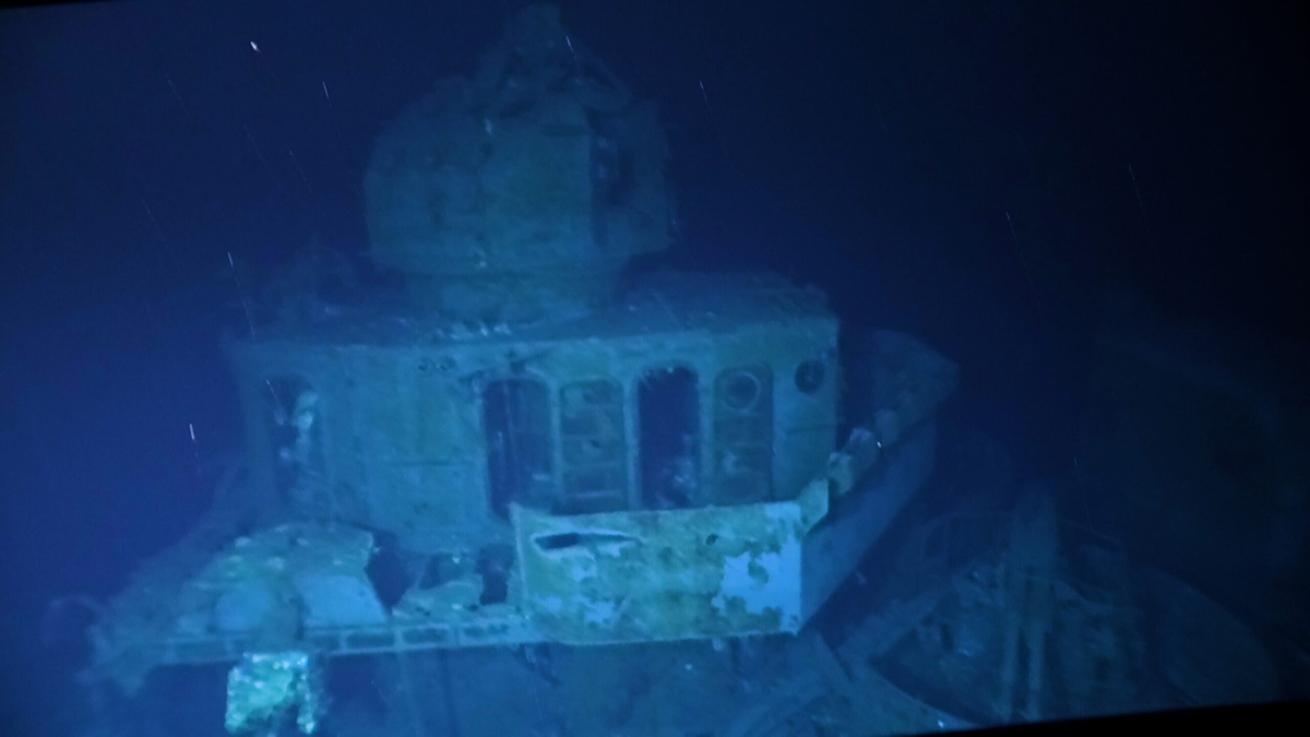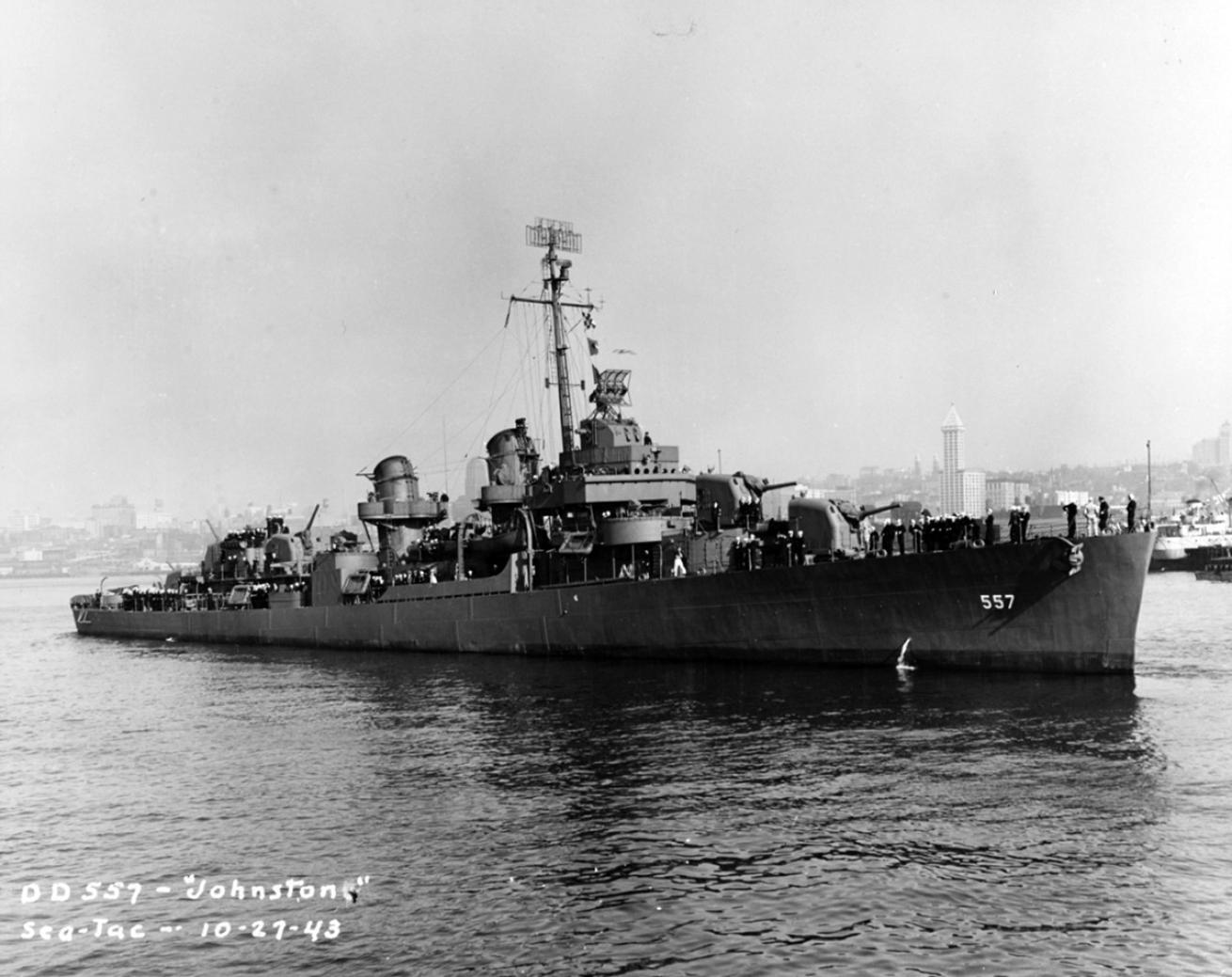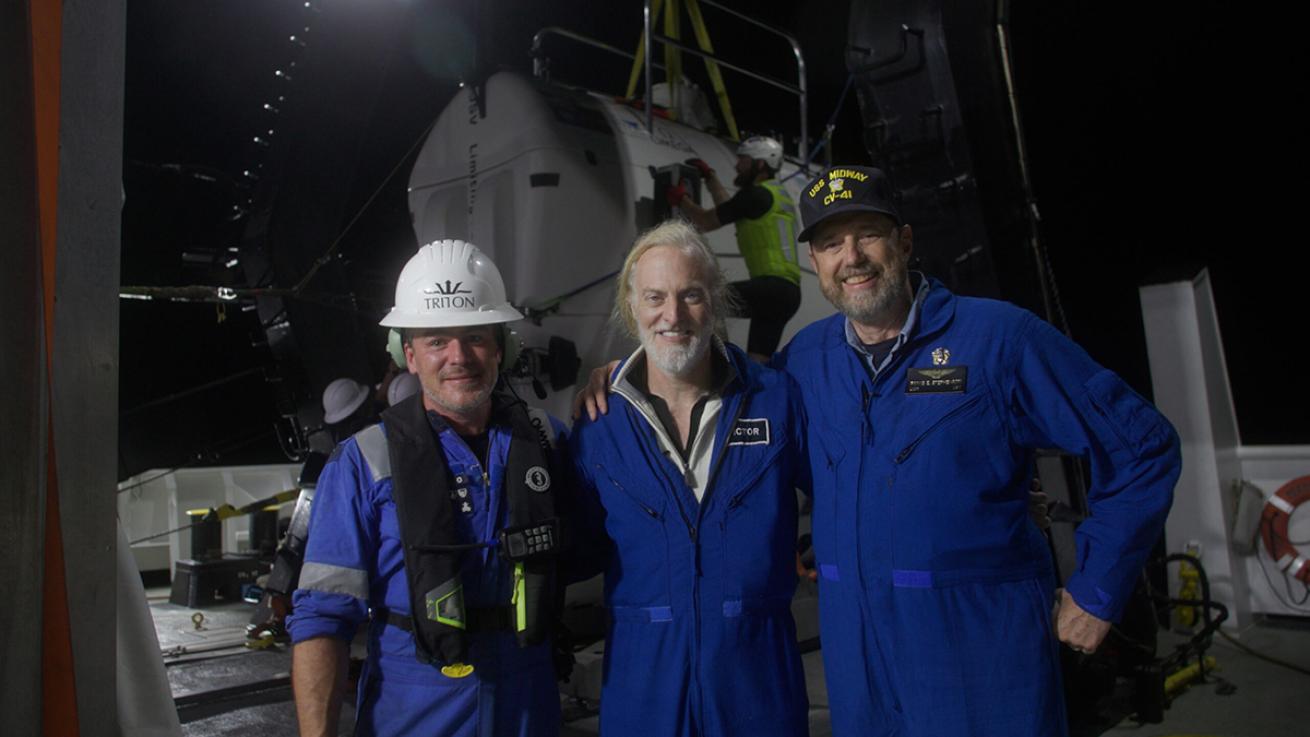World’s Deepest Wreck Dived for the First Time

Caladan OceanicThe wreck of the USS Johnston, a WWII destroyer, largely rests at 21,180 feet.
The USS Johnston, the world’s deepest recorded shipwreck, was visited for the first time this week in history’s deepest shipwreck dive.
A three-person expedition team, piloted by trip sponsor and retired U.S. Navy Commander Victor Vescovo, collected photos, videos, sonar data and field notes on the wreck during three dives. The U.S. Navy destroyer was lost in the fall of 1944 after an hours-long firefight with Japanese forces off the coast of Samar Island during the Battle of Leyte Gulf, one of the largest naval battles in history.
Expedition images and data are being provided to the U.S. Navy for free. “We have a strict ‘look, don't touch’ policy,” Vescovo says, “but we collect a lot of material that is very useful to historians and naval archivists.”
His team is still handing data over to the Navy, says Naval History Heritage and Command public information officer Lieutenant Junior Grade Mohammad Issa. This type of information is typically used by the Navy's underwater archaeologists to evaluate what ultimately sunk its vessels, as well as to “determine their condition, assess any environmental or unexploded ordnance hazards, honor our lost Sailors and Marines, and manage these fragile historical resources for their long-term preservation,” according to Issa.
Wreckage of the destroyer was first discovered in 2019 by Robert Kraft. Kraft’s team captured footage of the wreckage 20,000 feet and above with an ROV, but the ship could not be positively identified at that time.
Vescovo’s team visited the wreck in Limiting Factor, the only sub able to repeatedly visit the bottom of the ocean. It has reached the deepest point in every ocean, including 14 trips to Challenger Deep, under the purview of Caladan Oceanic and EYOS Expeditions. The unlimited depth sub allowed the team to reach the 21,180-deep wreckage. Here they captured imagery of the ship’s hull number, 557, allowing the Navy to confirm the wreck’s identity.

Courtesy of Mrs. Roger Dudley/U.S. Naval History and Heritage Command Photograph.The USS Johnston sits in a Washington State port in 1943.
"The wreck of Johnston is a hallowed site,” says the director of Naval History and Heritage Command, retired Rear admiral Sam Cox. “I deeply appreciate that Commander Vescovo and his team exhibited such great care and respect during the survey of the ship, the last resting place of her valiant crew.”
Early in the morning on October 25, 1944, a group of U.S. ships, the USS Johnston among them, encountered a large Japanese fleet off the coast of Samar, a Philippines island. During the subsequent battle, the Johnston captain Commander Ernest Edwin Evans saw Japanese ships targeting escort carrier Gambier Bay. He gave the order to “commence firing on that cruiser, draw her fire on us and away from Gambier Bay.”
Over the next two-and-a-half hours, the Johnston’s crew engaged with a series of enemy destroyers. Eventually, dead in the water and surrounded by Japanese vessels, Evans gave the order to abandon ship. It began to sink in less than half-an-hour, settling down below 21,000 feet where it would remain unseen for more than 76 years.
Of the 327 men aboard, only 141 survived. “About 50 were killed by enemy action, 45 died on rafts from battle injuries and 92, including Evans, were alive in the water after Johnston sank, but were never heard from again,” according to the Naval History and Heritage Command. No signs of lost crewmembers were spotted during the outing.
Evans would be awarded a posthumous Medal of Honor, the first Native American in the U.S. Navy and one of only two WII destroyer captains to receive the honor.
As the wreck expedition came to an end, its own ship, the DSSV Pressure Drop, came to a stop. Its whistle sounded and a wreath was laid afloat on the battlefield.
“As a U.S. Navy officer, I’m proud to have helped bring clarity and closure to the Johnston, its crew, and the families of those who fell there,” says Vescovo.

Caladan OceanicVictor Vescovo (center) sponsored the expedition to the Johnston. Vescovo is the first person to visit the deepest point in all five oceans.










